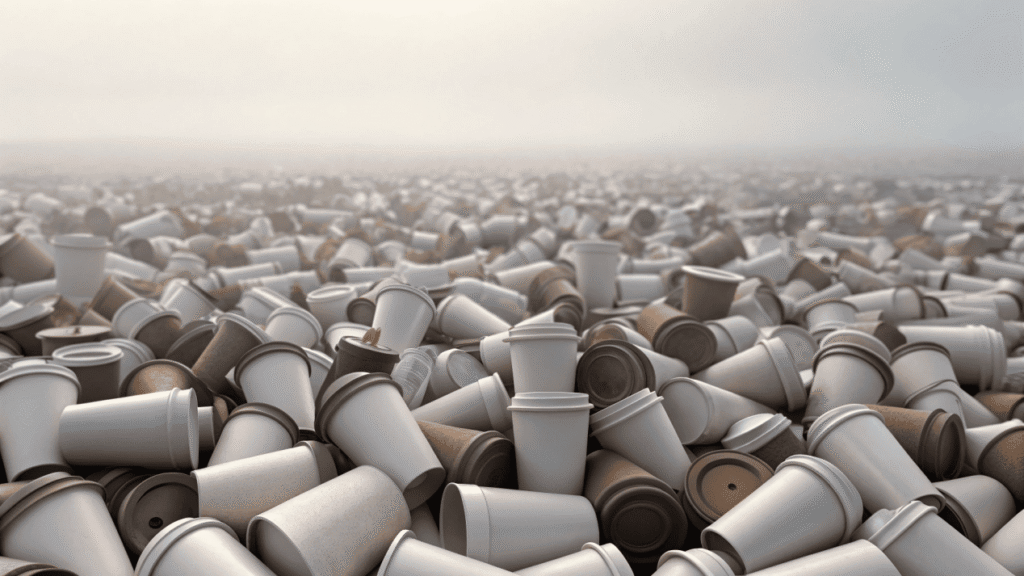You chose a paper cup to be eco-friendly, but still feel a nagging guilt. Is this really better than plastic? The truth is, that paper cup is an environmental trap.
Paper cups are bad for the environment because their waterproof plastic lining makes them non-recyclable in standard facilities. This mixed material, combined with consumer confusion and resource-intensive production, results in massive landfill waste and pollution.
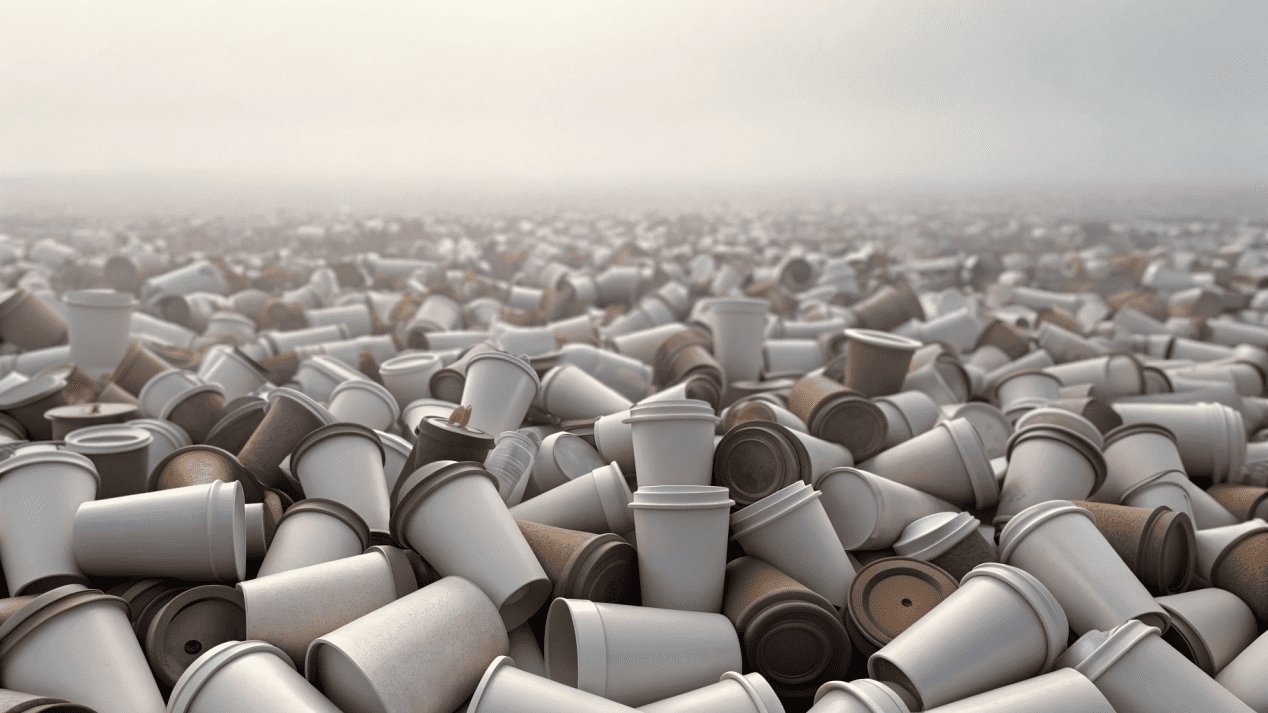
I once had a client, a very passionate café owner, who proudly told me he chose paper cups because "paper is natural and recyclable." He was shocked when I explained that almost every cup he served would likely end up in a landfill. It's not his fault; it's a common belief. But as an engineer in this industry, I see how a design created for convenience has become a major environmental headache. Let's break down the real reasons why that simple paper cup is so problematic.
Why Can't Most Recycling Centers Handle Paper Cups?
You finish your coffee and toss the cup into the paper recycling bin, feeling good. But that one well-intentioned act could ruin an entire batch of otherwise good recyclable materials.
Standard recycling plants are designed for pure paper, but coffee cups are a composite material. Their machinery cannot separate the thin plastic lining from the paper fiber, treating the entire cup as a contaminant.
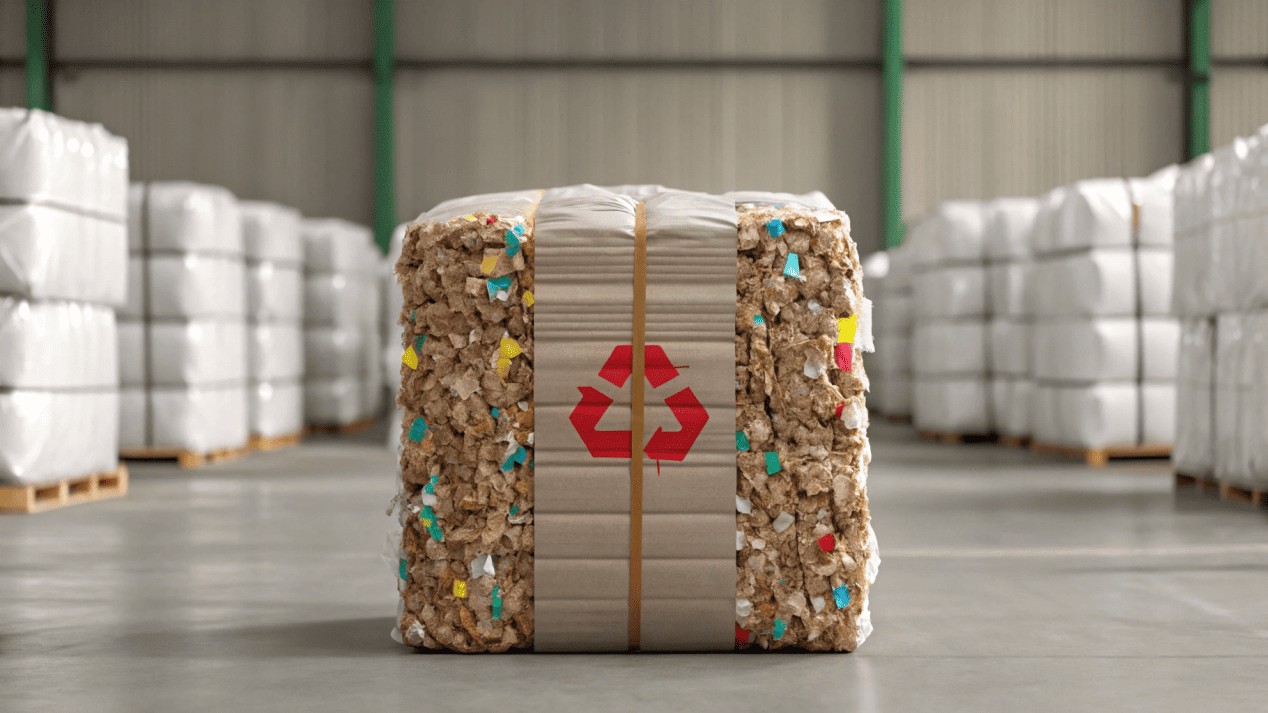
The core of the problem lies in the cup's basic construction. It's a classic case of a product's main feature also being its biggest flaw when it comes to disposal. To hold hot liquid without turning into a soggy mess, the paperboard must be sealed.
The Plastic-Paper Problem
That sealer is a razor-thin layer of polyethylene (PE) plastic, tightly bonded to the paper fiber using heat and pressure. In a standard paper recycling pulper, which just uses water to break down paper, this plastic lining doesn't dissolve. Instead, it breaks into tiny flakes that contaminate the paper pulp, making it useless for creating new paper products. As a result, sorting facilities are programmed to reject them on sight to protect their machinery and final product.
What About "Greener" Linings?
Some companies have switched to PLA, a bio-plastic made from cornstarch. While it's a step up from petroleum-based plastic, it creates a different recycling headache. PLA has a different melting point and chemical makeup from standard plastics, so it's a contaminant in the plastic recycling stream as well. It's a material without a home in most recycling systems.
| Lining Type | Material | Standard Recycling Outcome |
|---|---|---|
| Traditional | Polyethylene (PE) | Contaminates paper stream; rejected. |
| Bioplastic | Polylactic Acid (PLA) | Contaminates both paper and plastic streams. |
Aren't "Compostable" Cups a Perfect Solution?
You see the "compostable" label on a cup and feel a wave of relief. Finally, a guilt-free option! But that label often promises more than it can deliver in the real world.
Most "compostable" cups only break down under the high-heat conditions of an industrial composting facility, which are extremely rare. They will not biodegrade in a backyard compost pile or in a landfill.
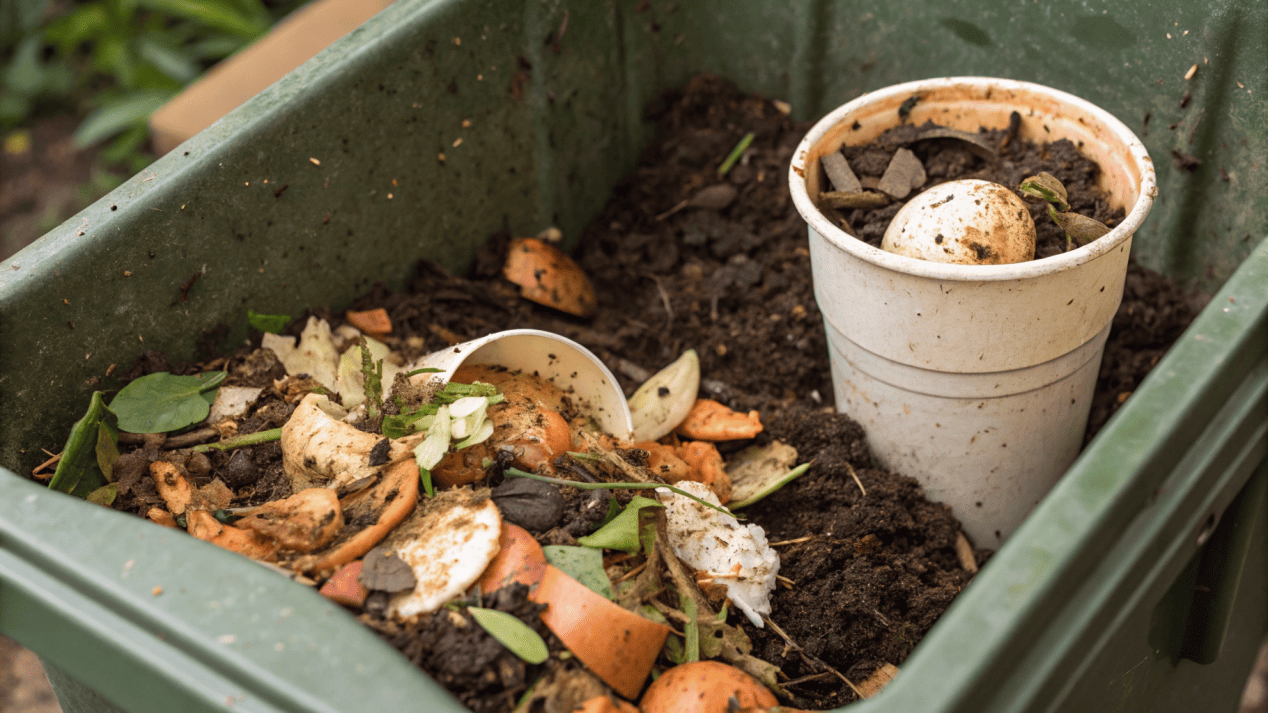
This is one of the most misleading areas for consumers. As manufacturers, we can create a cup that is technically compostable, but it's useless if the infrastructure to actually compost it doesn't exist for 99% of the population.
The Industrial Composting Requirement
Those PLA-lined cups need to be held at a sustained temperature of over 55°C (131°F) for an extended period, with specific levels of moisture and aeration. This is something only a controlled industrial facility can achieve. In your home compost bin, or worse, in an oxygen-deprived landfill, it will sit there for decades, just like a plastic bottle.
The Hidden Danger: PFAS Chemicals
Even more concerning is the use of PFAS, or "forever chemicals," in many food packaging products, including some paper cups. These compounds are used to provide superior resistance to grease and water. The problem is they never break down in the environment. They can leach from the cup into your drink and accumulate in soil, water, and our bodies, where they are linked to serious health issues. This turns a seemingly innocent cup into a potential source of permanent pollution.
| Disposal Method | Outcome for PLA-Lined Cups |
|---|---|
| Home Compost | Fails to break down. |
| Landfill | Fails to break down. |
| Industrial Compost | Breaks down successfully (if facility exists). |
Why Do So Many People Recycle Coffee Cups Incorrectly?
You see the little recycling symbol on the bottom of a coffee cup and logically assume it's meant for the recycling bin. This simple misunderstanding is a huge part of the problem.
People see "paper" and the recycling symbol and naturally believe the cup is recyclable. This well-intentioned but incorrect action, known as "wish-cycling," contaminates entire batches of actual recyclables, forcing them to be landfilled.
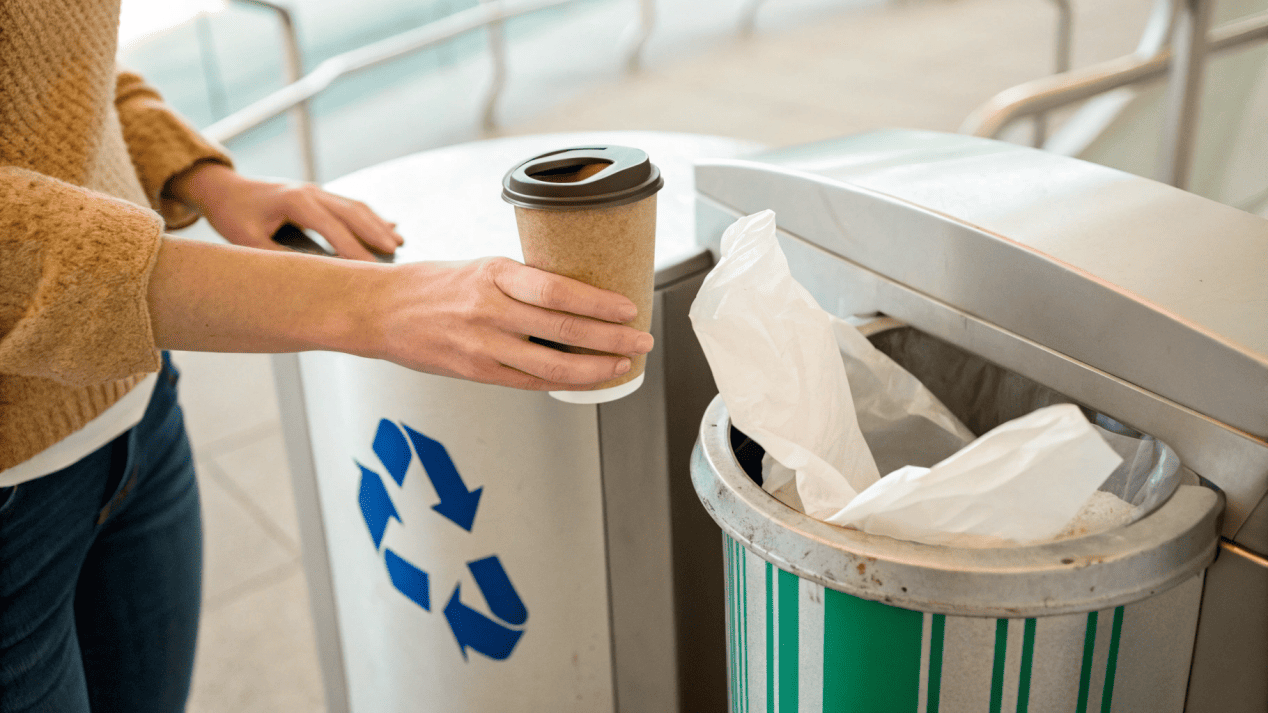
I see it all the time—at airports, in offices, everywhere. Someone finishes their latte and, with the best of intentions, places it in the paper recycling bin. They feel they've done their part. In reality, they've just made the recycler's job harder and potentially condemned a whole truckload of clean paper to the dump.
The "Wish-cycling" Trap
The recycling symbol on packaging can be very misleading. Often, it just identifies the type of material it's made from, not that it is actually recyclable in your local area. Because coffee cups are a mixed material, they don't belong in any standard bin. This widespread confusion is a primary driver of contamination in our recycling systems.
Confusion Around "Compostable" Labels
The same problem exists for "compostable" cups. The average person doesn't know the crucial difference between home and industrial composting. They see the label and toss it in their garden compost pile or even the green waste bin, assuming it will turn into soil. When it doesn't, it creates frustration and mistrust in the system, hindering progress for even the most eco-friendly options.
What Are Governments Doing About All This Cup Waste?
You feel overwhelmed by the scale of the single-use cup problem, like your individual choices don't matter. But the tide is turning as governments are finally stepping in to force change.
Governments are now implementing policies like outright bans, fees on disposable cups ("latte levies"), and laws making manufacturers financially responsible for their packaging's disposal, strongly pushing the industry toward reusable solutions.
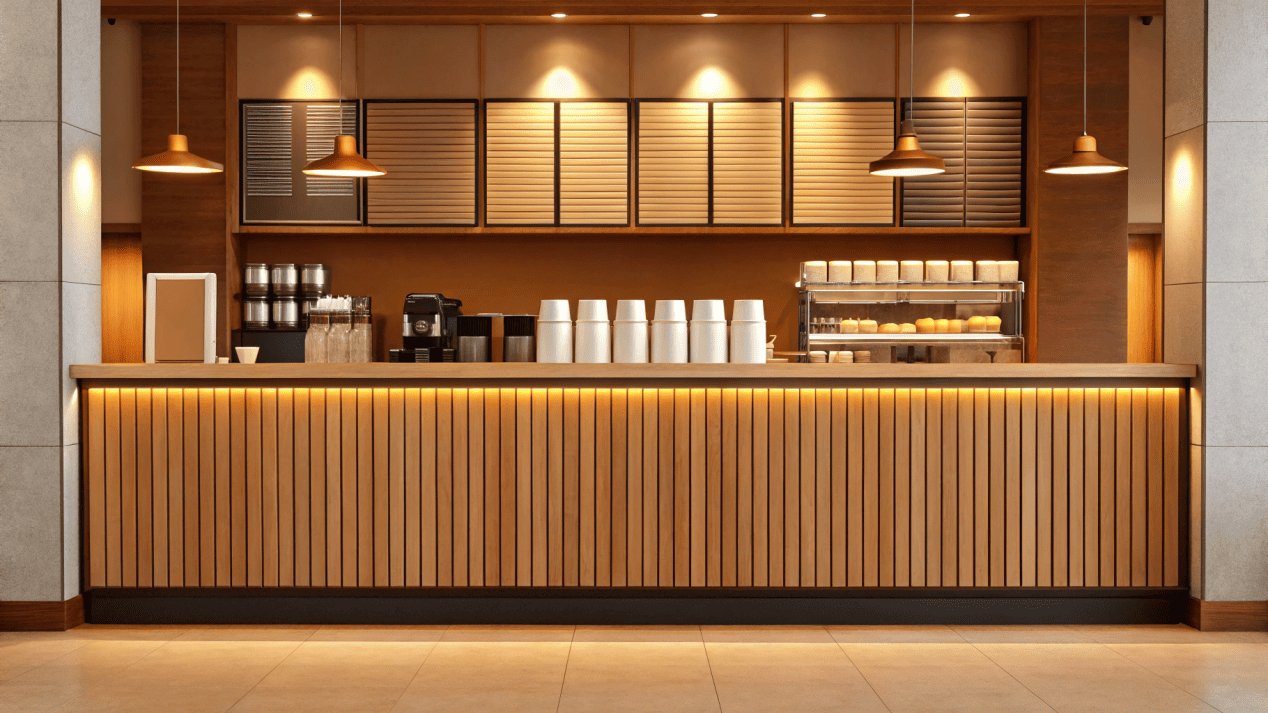
The waste problem has become too big to ignore, and policy is the most powerful tool to drive large-scale change. From my perspective in the industry, this is creating a massive and necessary push for innovation.
The Stick: Bans and Levies
The most direct approach is a ban on certain single-use items or a fee for using them. By making disposable cups more expensive or harder to get, these policies directly incentivize consumers to bring their own reusable cups. Ireland's "latte levy" is a perfect example of how a small fee can dramatically shift public behavior.
The Responsibility Shift: EPR Programs
A more systemic change is happening through Extended Producer Responsibility (EPR) programs. In simple terms, these laws make the manufacturer—companies like mine—pay for the collection, sorting, and recycling of our products at the end of their life. This financial responsibility forces us to design products that are genuinely easier to recycle or to invest in the systems that can handle them. It's a game-changer that pushes the entire industry to think in a circular, not linear, way.
Conclusion
The paper cup issue is complex, involving materials science, consumer habits, and policy. The only true solution is a fundamental shift away from single-use convenience toward a reusable, circular economy.
